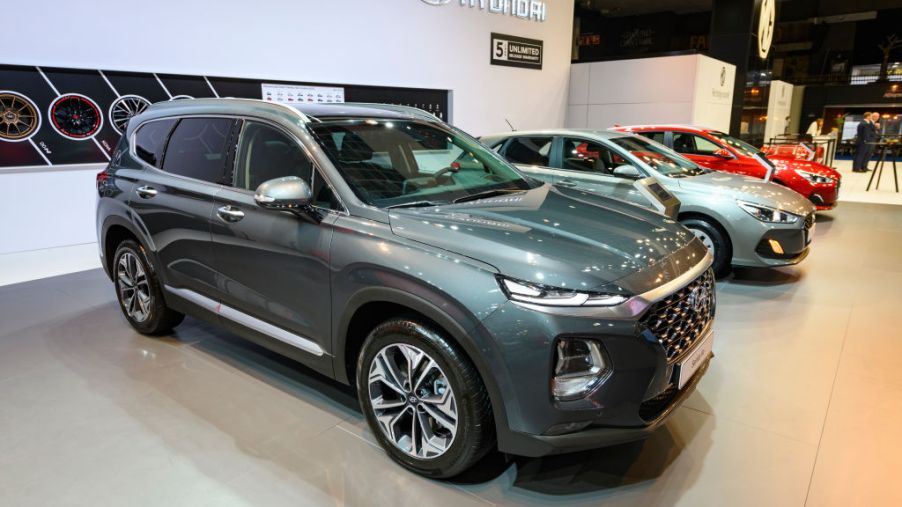
The Worst Part About the 2020 Hyundai Santa Fe
The Hyundai Santa Fe is one of those SUVs that seemed to come out of nowhere and has established itself as a real powerhouse. It offers a lot for the amount of money consumers invest in it and can go head-to-head with some of the best in its category.
Review sites like Kelley Blue Book are thoroughly impressed with the Santa Fe, but not everyone is in love. Consumer Reports agrees that the Santa Fe has some great features, but CR wasn’t swayed by its greatness. Here’s why the Santa Fe only got three out of five in reliability.
How does Consumer Reports decide how reliable a vehicle is?
According to Consumer Reports, “Overall score reflects a vehicle’s performance in our road tests, predicted reliability and owner satisfaction from our annual auto surveys, the availability of front-crash prevention systems, and crash-test results from IIHS and NHTSA if tested.” In other words, there are a lot of factors that come into play when deciding how reliable a vehicle is.
Consumer Reports also compares vehicles to similar competitors in the same category. This gives the review site a lot of info to go on. A vehicle may do great on a test, but if the competition is superior in several areas, it may impact the score.
What makes the Hyundai Santa Fe so successful?
While the Hyundai Santa Fe doesn’t have the most striking body, this doesn’t seem to hold it back. According to Car and Driver, it has a 185-hp 2.4-liter engine that comes standard and a 235-hp turbocharged 2.0-liter engine in higher trim levels. Both come equipped with an eight-speed automatic transmission. Front-wheel drive comes standard, but drivers can upgrade to all-wheel drive for $1,700.
The interior is spacious and loaded with tons of safety features. The rear occupant alert is perfect for parents who have little ones and are on the go. Apple CarPlay and Android Auto come standard, and drivers can opt for wireless charging. The Hyundai Santa Fe has some excellent safety scores, which is another great point for families who need more room as their family grows.
One of the greatest points about the Santa Fe has to be its price. The base model starts at $26,125 and tops at $39,425. Hyundai also offers one of the best powertrain warranties on the market.
Why does the Hyundai Santa Fe have a low reliability score?
It might be unfair to say that the score is low; it’s more like average. Three out of five places the Hyundai Santa Fe squarely in the middle of the competition.
The Hyundai Santa Fe earned an overall score of 78 out of 100. Part of this was due to the sheer number of areas that only earned a three. Acceleration, transmission, fuel economy, annual fuel cost, emergency handling, the ride quality, and trunk/cargo area were all ranked a three.
Both engines for the Santa Fe are lackluster at best. It takes 8.7 seconds to go from 0 to 60 mph. Since there are some SUVs that take even longer than that, this isn’t terrible, but competitors like the Honda Passport and Chevy Blazer are better choices for drivers who feel the need for speed.
The driver experience is also rather humdrum; there’s no excitement to it. The Santa Fe is great for casual driving, but it won’t satisfy drivers who want a little spice to their ride.
The only area that earned a five out of five was the passenger seating. All is not lost, however. In spite of the average reliability score, Consumer Reports still believes that owners will be thrilled with the midsize SUV and gave it a five out of five in owner satisfaction.


